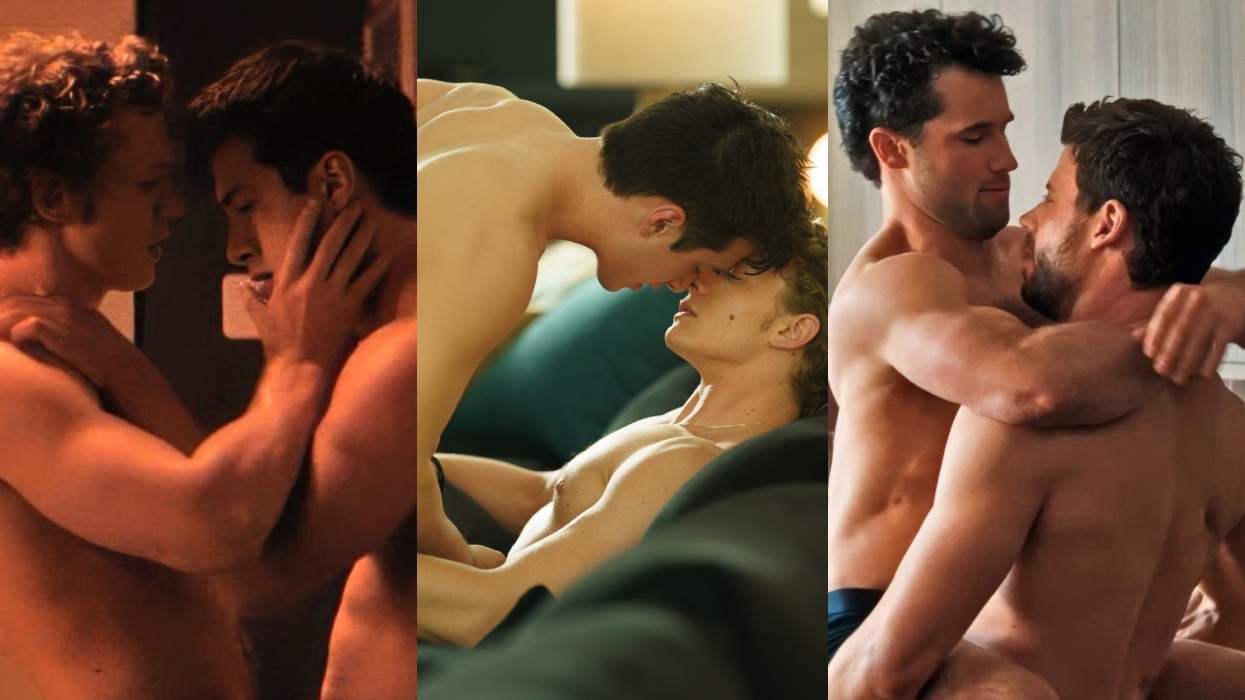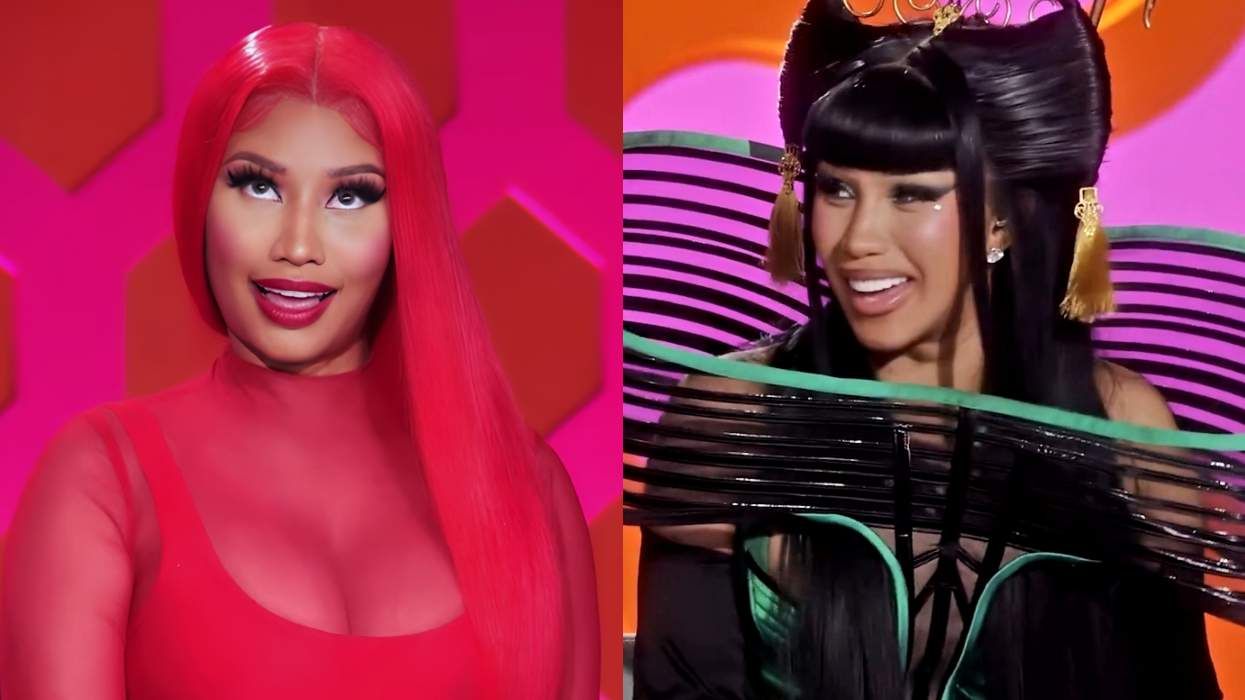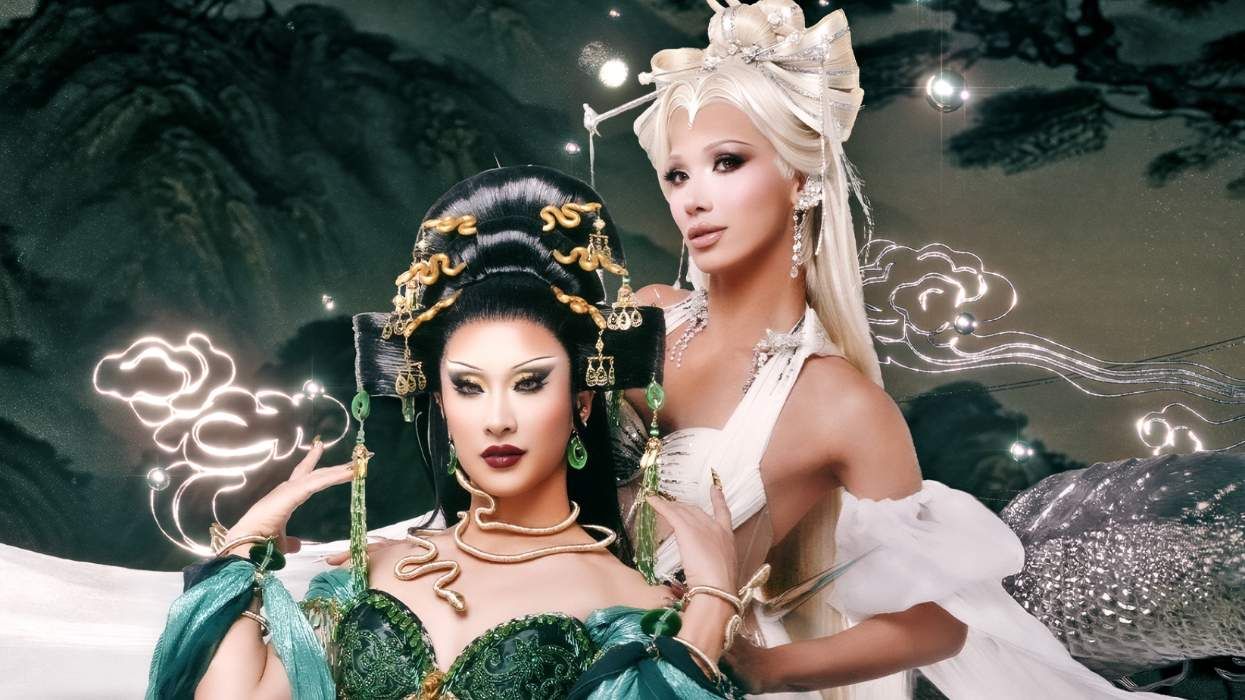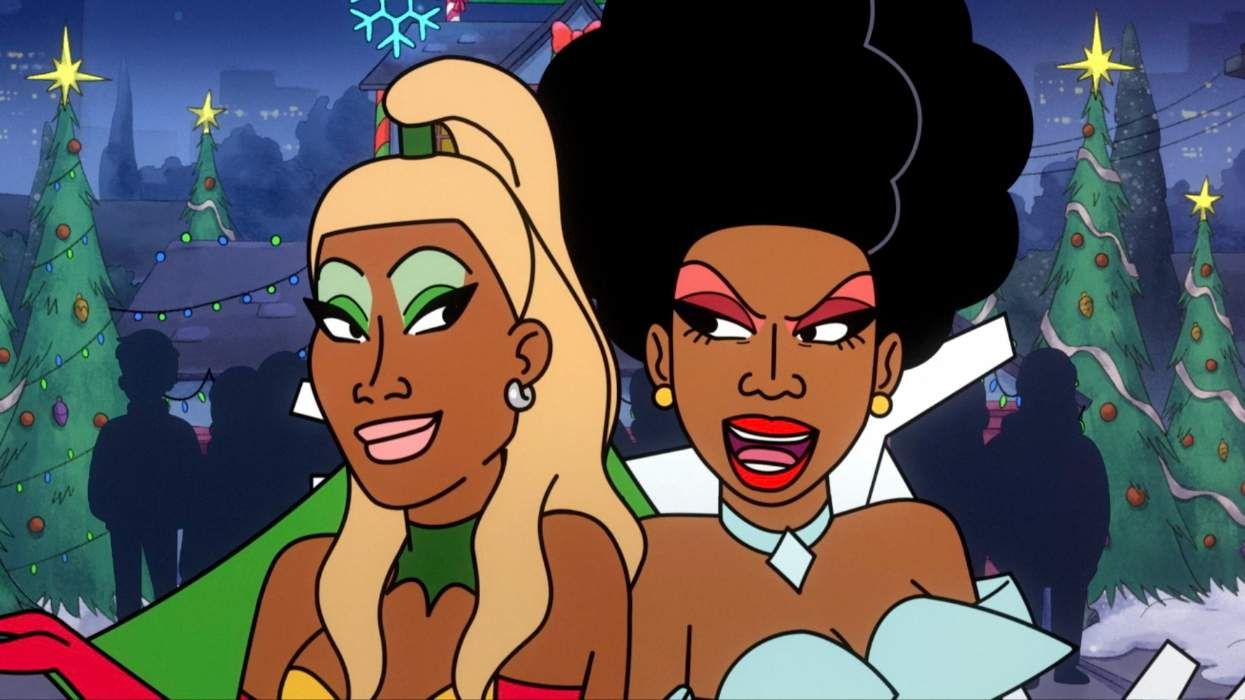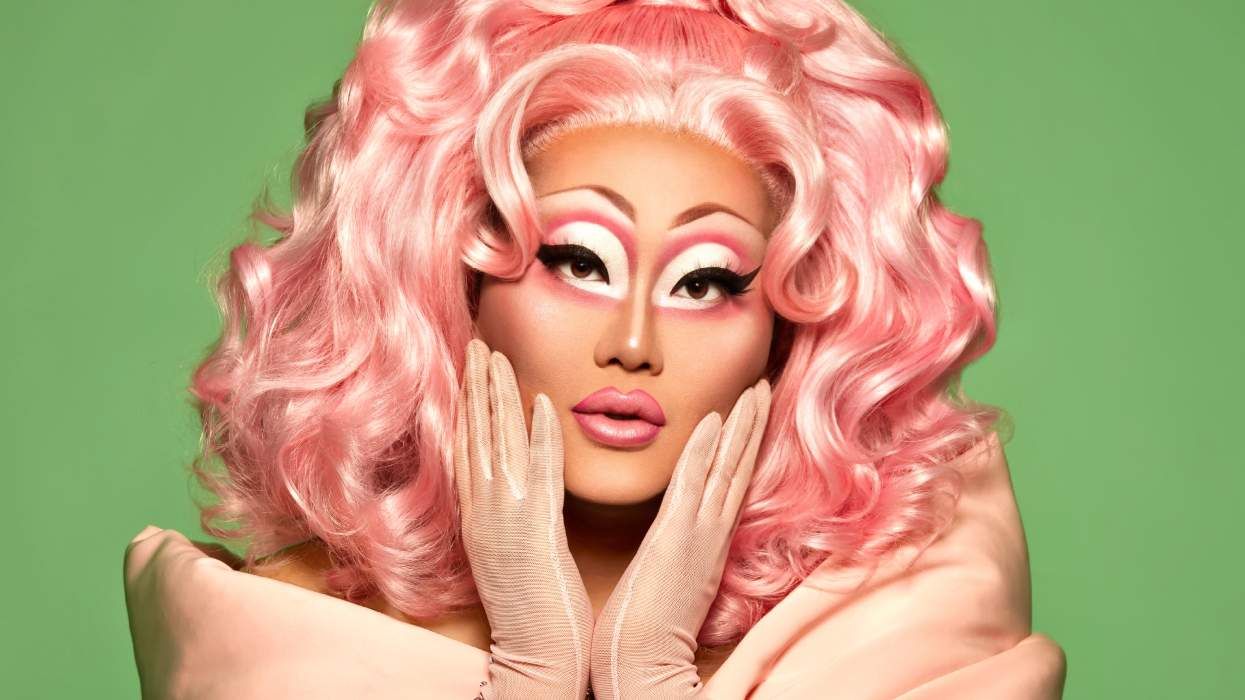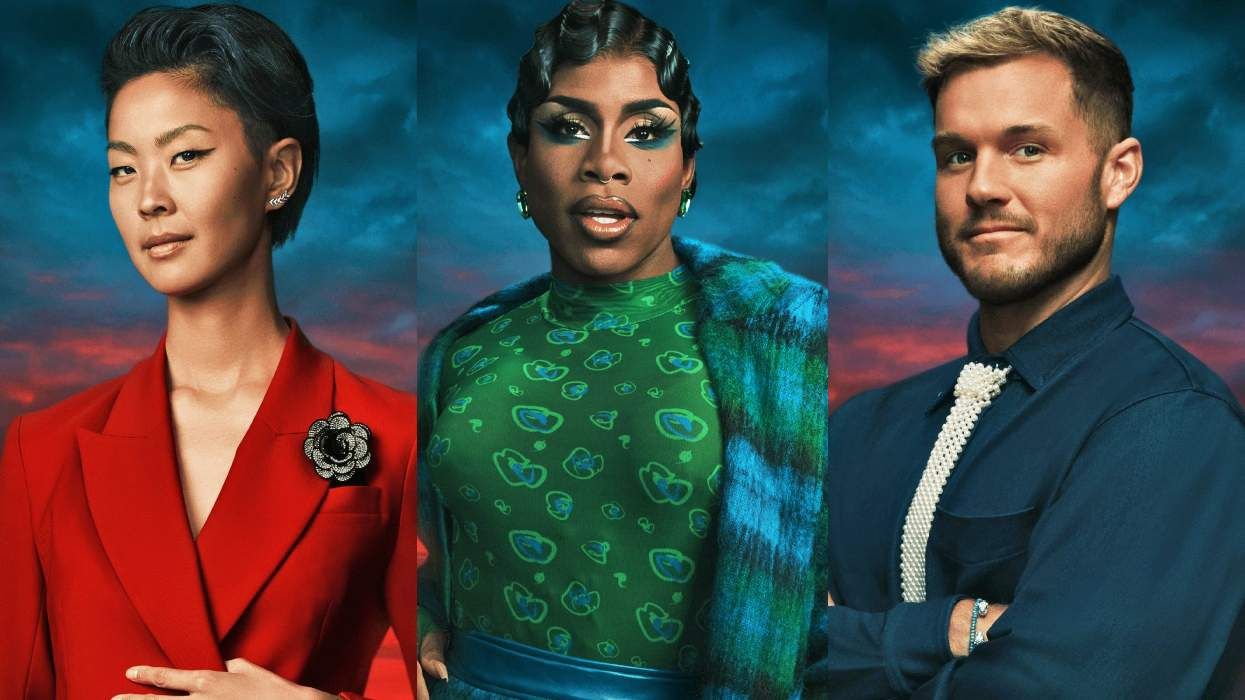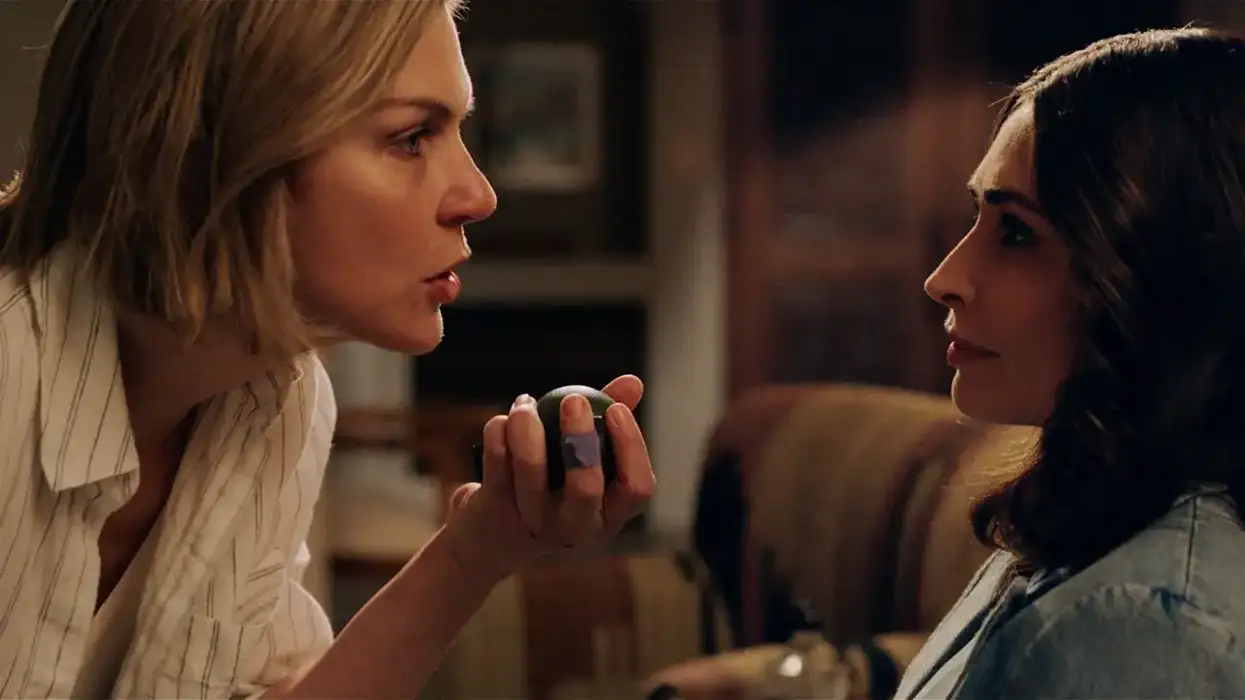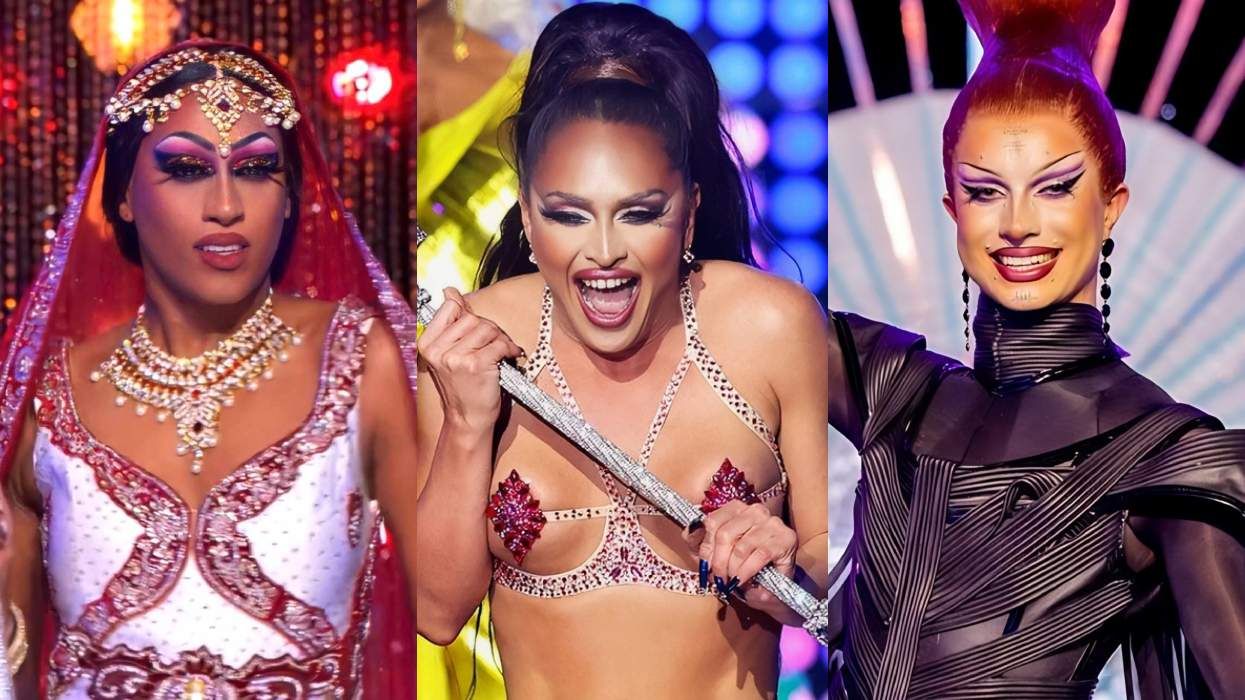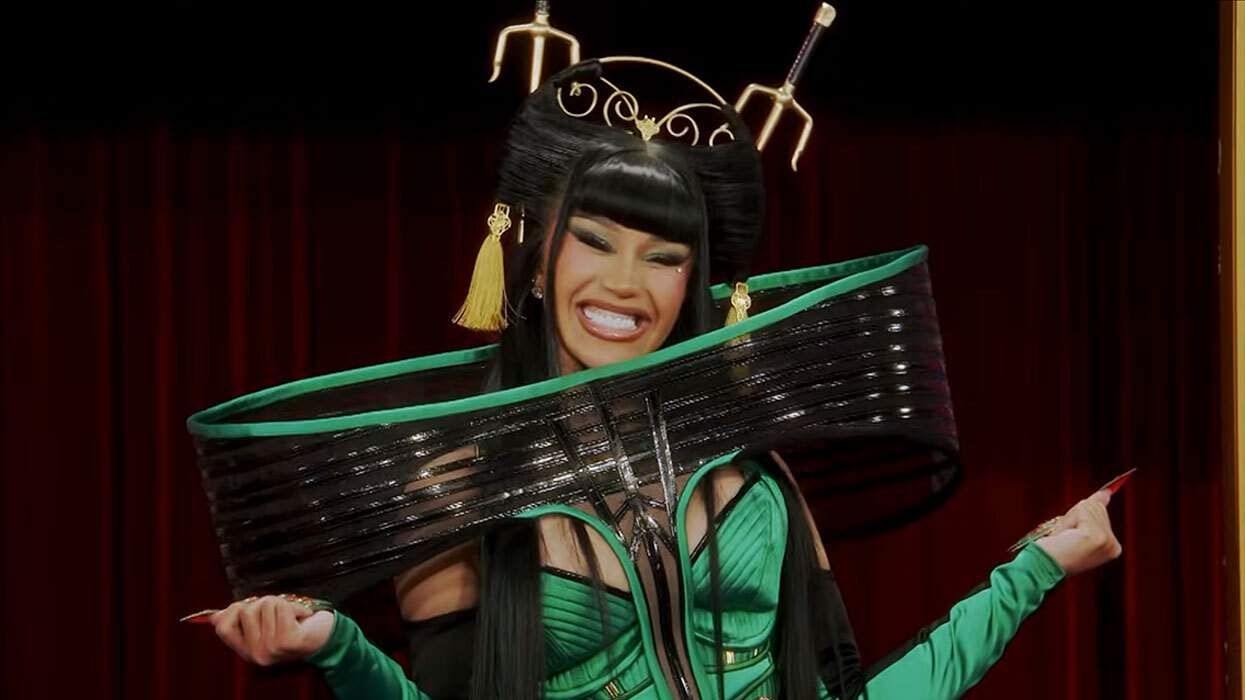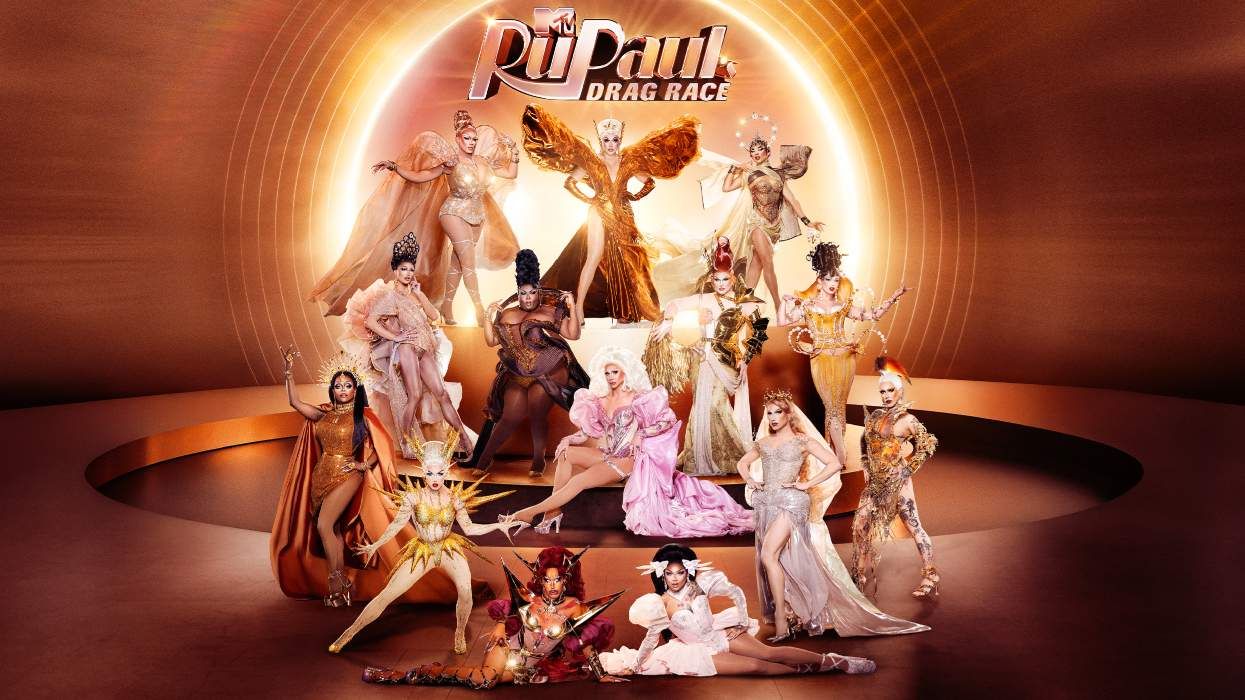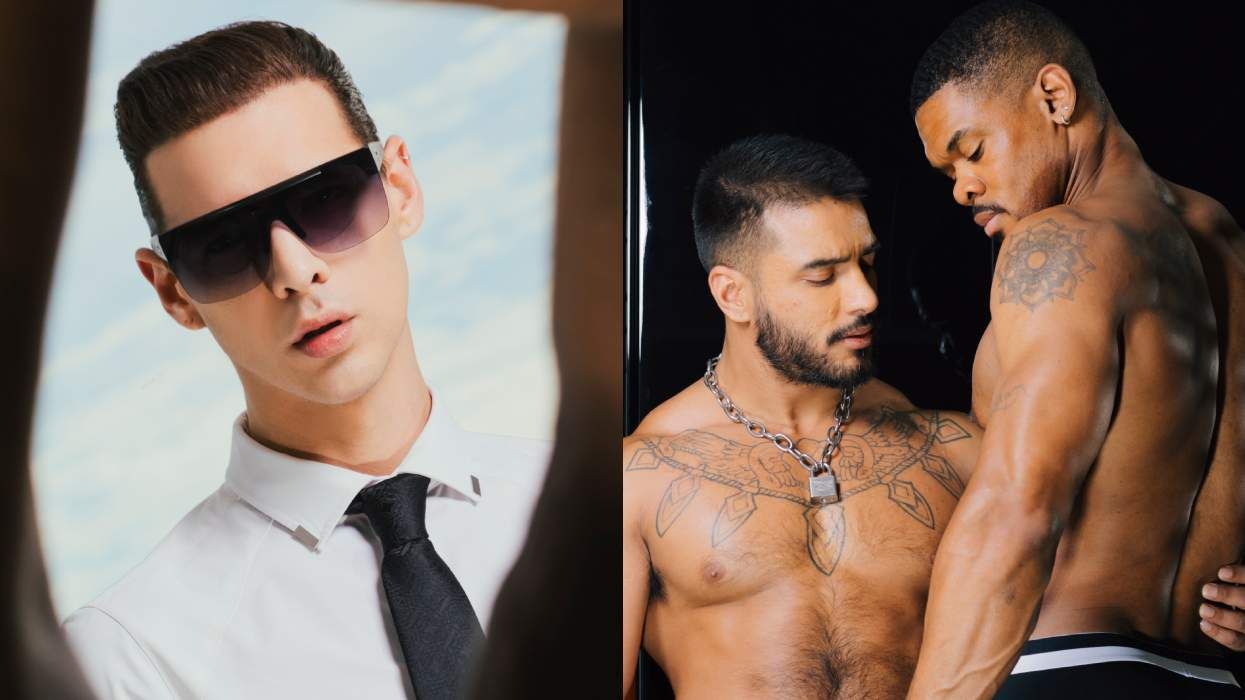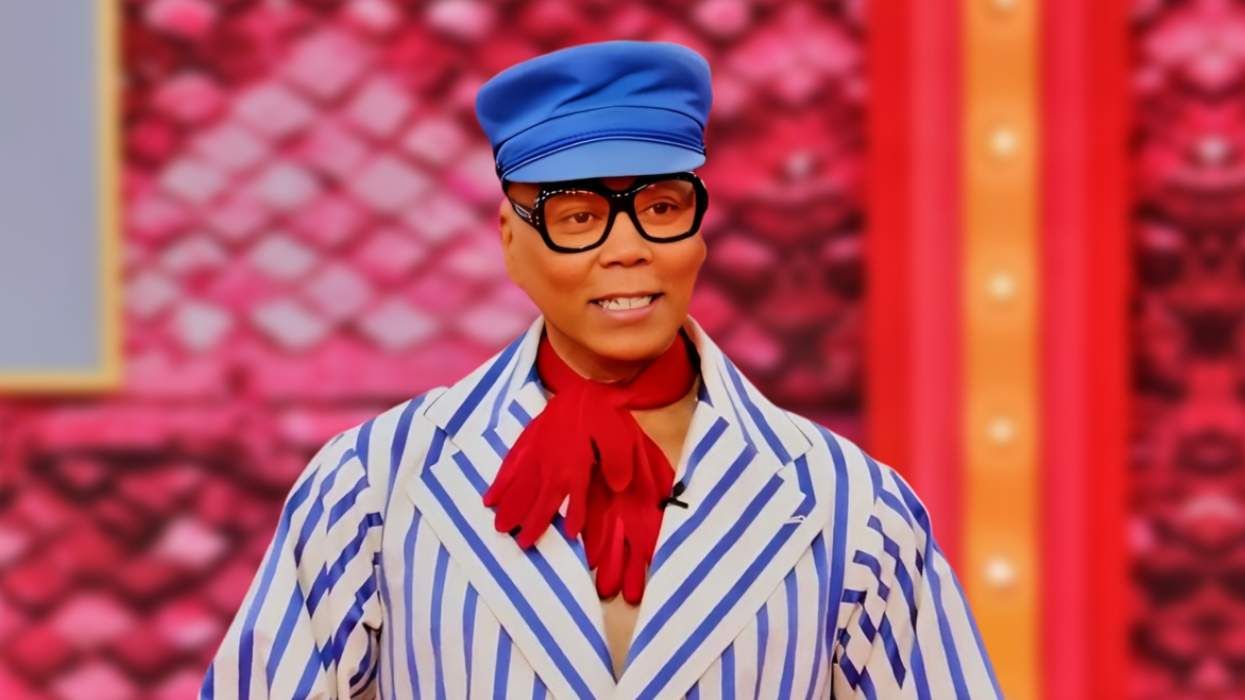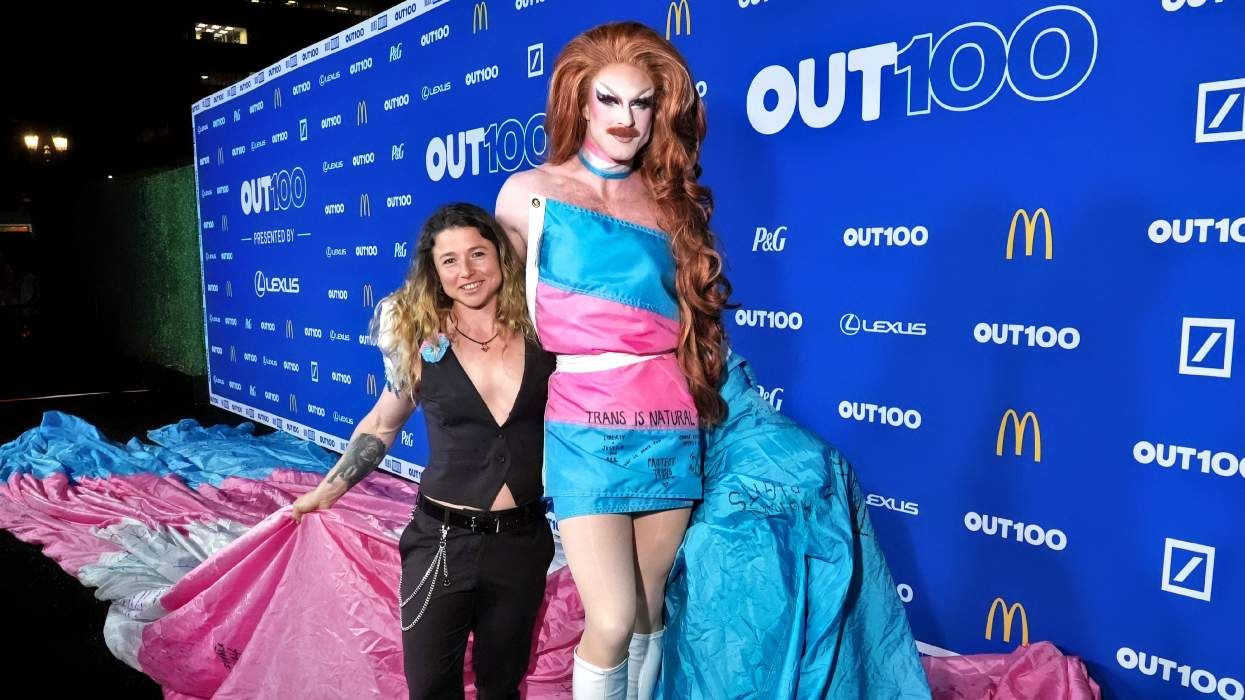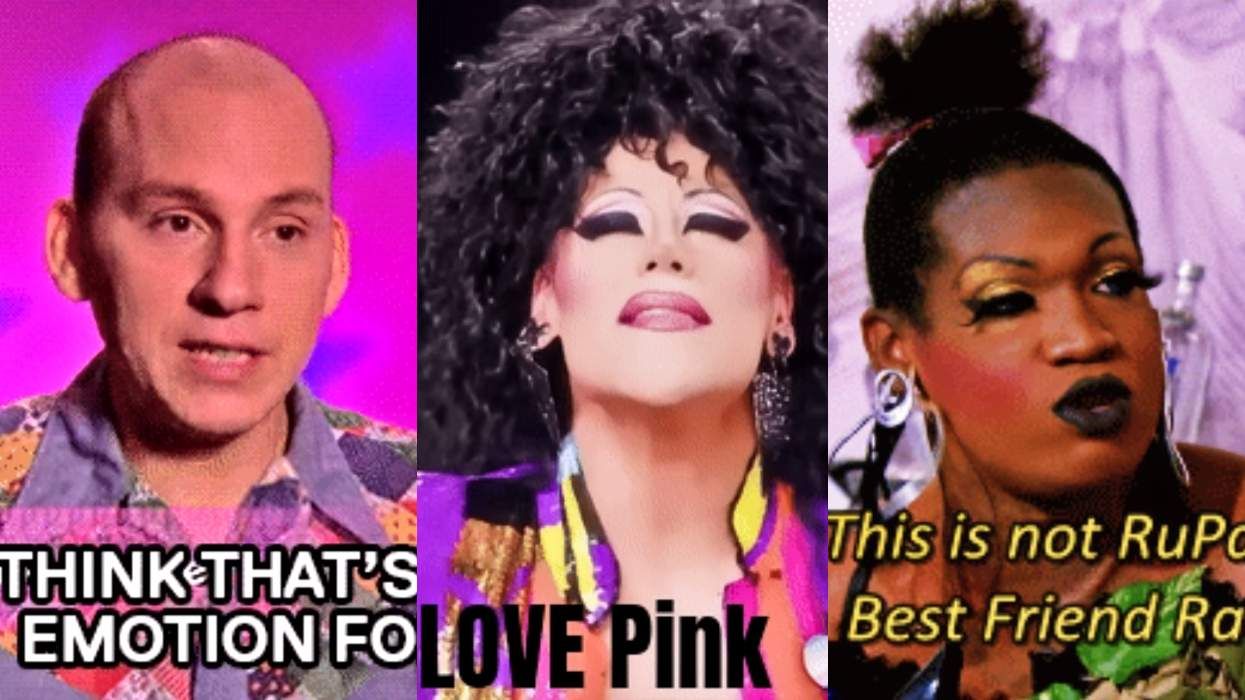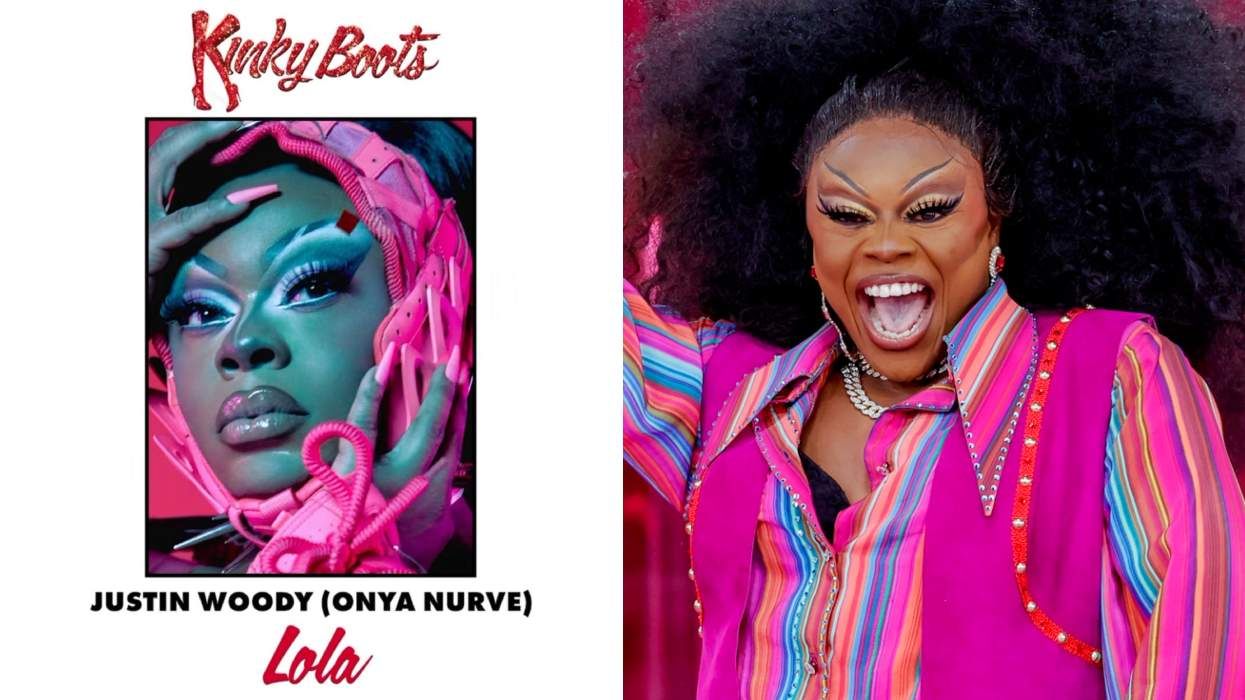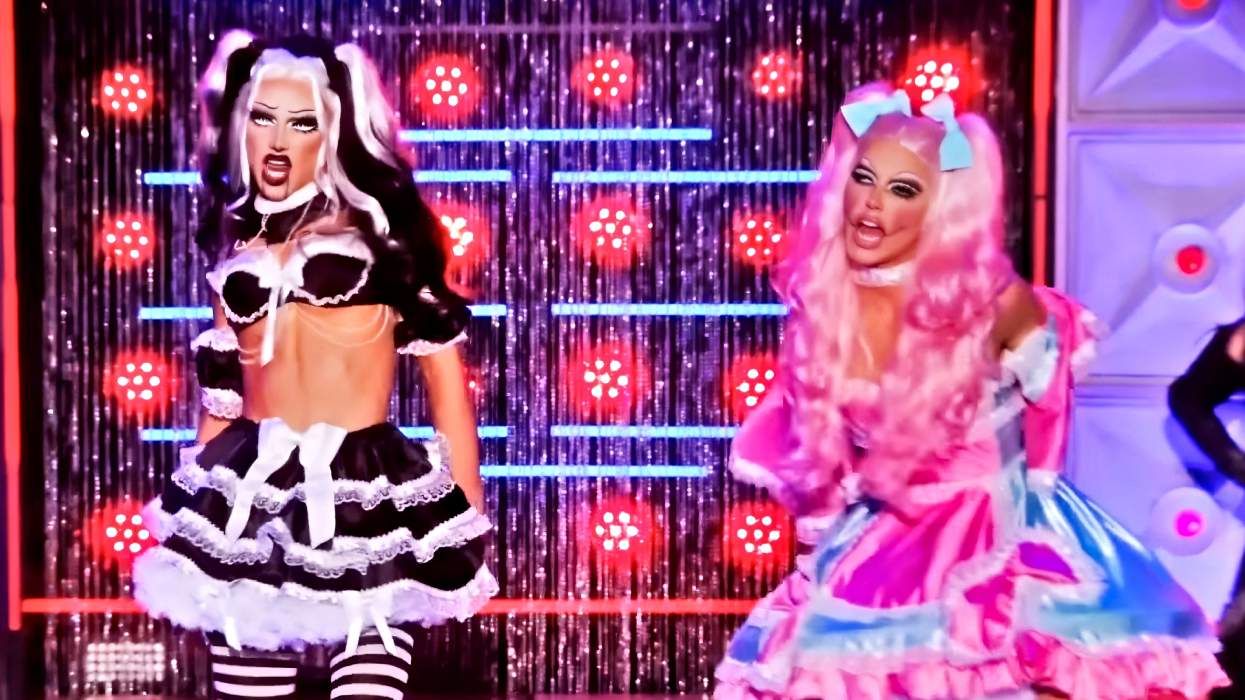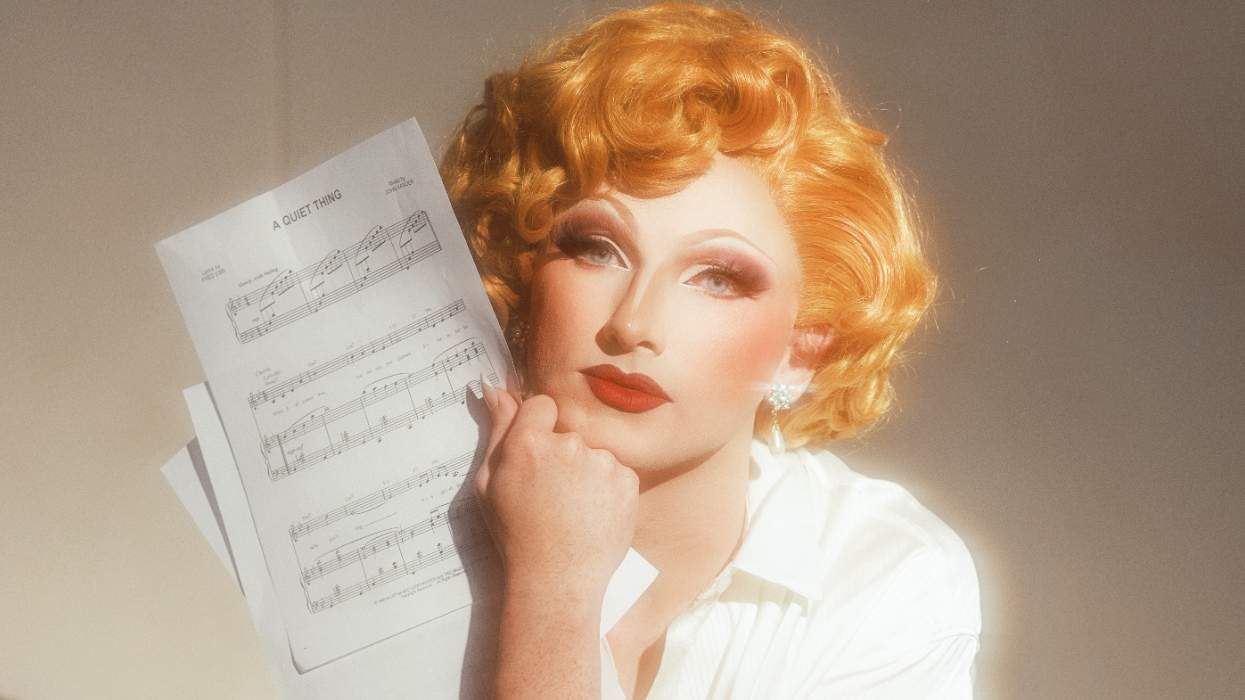You could say Sasha Velour's first drag performance occurred before she even had the language for what "drag" was.
As a child, she forced all her neigborhood children to put on a production of Dracula in her backyard. Extension cords ran from her house out to the yard where she hanged lamps to light the stage of her swing set. She made all the kids come to rehearsals and charged one penny for tickets. Her late mother was a supporter of these performances before she passed away, playing a big part in Velour's early interest in the history of theater. She showed Velour Nosferatu at a young age, which turned into a childhood (and now adulthood) obsession with old-time vampiric imagery, and then informed the creation of her Drag Race-winning character who always features a fierce unibrow, a stark bald head, and often pointy ears as well.
In many ways, her new solo show Smoke & Mirrors is an extension of that very first performance she did decades ago. The show, which features 13 costume changes, a series of original projections, and lip syncs old and new, is an homage to both her mother, and her love for theater at the end of the 18th century. With magic acts, clowns, and other tropes familiar to the rich history of old world theater, the best thing about the show, aside from her generous and personal monologues throughout, were the ways Velour let you see behind the scenes of the show's tech in a true, vaudevillian way.
Here she talks about how her costumes, vaudevillian references, and genderfluid identity all played a part in Smoke & Mirrors.
First of all, congratulations! I absolutely adored the show. As someone who has been going to your monthly show in Brooklyn, Nightgowns, for years, and who's watched your own work so closely, [Smoke & Mirrors] really felt true to the kind of art that you wanna make. How long have you been planning it?
Thank you so much! That is very high praise coming from you. It's been bubbling for a long time, so thank you for that. Officially planning it since the beginning of November, but the oldest number in the show, I've been performing since 2015. So, it feels like these ideas and these things and the early draft of the show has been with me for a while.
I definitely felt like it was pulling from things that were part of the Sasha Velour cannon, but at the same time expanding on new elements of what kind of art and drag you want to produce. What has been the most positive response, after the show?
Actually, I got to talk to my friend [Miss] Malice after the second night, and she's been coming to see Nightgowns since, literally, before it was even officially called Nightgowns. She just kind of walked me through her interpretation of the show from start to finish. She has such an incredible way with words, and I felt so seen and understood. She took things even deeper, in some places, than I had intended them to be and I love that too because I feel like we are always trying to create drag performances that mean as much to the audience as they do to us.
Absolutely, and speaking of creating--talk to me about the gorgeous Diego Montoya costumes. What was the process of working with him to get these custom pieces?
It was really fun because Diego and I have kind of worked differently each time. Sometimes he'll create a drawing, and present it to me as a hosting gown or something, and sometimes, like with the alien for example, I did the drawing of exactly what I was thinking of. For this one, we kind of explored an even more collaborative version, because I would send just an initial, big picture sketch of what I had in mind, then he would fill in all the details. His eye tends to focus on beautiful embellishments and up-close details, and mine tends to look at the whole picture, the stage.
Beautiful, and I know in addition to the costumes, the visuals for this show were absolutely stunning. Some of the numbers that you performed played with the Vaudevillian trope of clownery and planned mistakes that make the production feel funny, authentic, and very aware of itself. When it comes to the funny, tongue-in-cheek element, what was behind that choice?
I love the clowns. When my parents took me to Russia, we went to a lot of Russian circuses, and their clown tradition is very specific, and they often have three [clowns] that will kind of take you through the transition. I felt like that kind of balanced out the melodrama of circus illusions and dramatics. I am so inclined towards melodrama as a performer, I felt that transitions, in-between moments, had to be light, and personal, and a little camp, a little tongue-in-cheek.
In addition to Russian clownery, there was also an element of magic, witchery, and I even saw some tarot imagery scattered throughout the show, as well as it's promotion. How does magic and occult come into play with Smoke & Mirrors?
Well, as I've been trying to learn more about the history of drag, I've seen how it played into those traditions throughout time: witchcraft, Vaudeville, the craze for illusions in early cinema at the turn of the century, and drag was often part of those as well. So, I guess I'm interested in the magic and witchcraft side of drag, instead of the cabaret live-singing side. I feel it needs to be a bit little more explored. With that being said, "pulling back the curtain," so to speak, is one of my favorite visual metaphors. Instead of trying to dupe the audience or shock them, I feel like drag performers are always letting people in on the joke and showing them how we do it. It's like, the projections are magic tricks, yes, but also you know what's happening. So, it's the magic of a job well done, rather than some magical secret.
Was there any element of the show that you felt was a big departure or risk from the work that you been previously been making?
The thing I was most nervous about was talking actually. Even though I do talk at Nightgowns, sometimes it's scripted and sometimes it's improvised. I wanted to be so much more honest in this show that it definitely felt like new terrain. I must've written and thrown out, literally, 30 drafts of what the talking for the show could be, and I ended up kind of improvising it the first night [Smoke & Mirrors] was in Australia. That is something that many people say they really enjoy--when I talk as part of the show, but it's only recently stopped being terrifying for me.
The monologues were my favorite part of the show for sure. Specifically, you dove into your childhood to formulate the basis of this show. Can you talk about how your childhood or your early obsessions with theater came to play into Smoke & Mirrors?
I wanted to give an introduction to me, on my own terms because most people have an introduction to me through a reality TV show. Seeing the imagery has been consistent for me through my whole life. That, I think, is one of the most defining things about my life, the essence of childhood and the things that I like to do. I wanted to really share that with people for the first time in many ways.
I felt that personal element to the narrative. It was also very personal in the ways you decided to talk about your relationship to your gender. Why did you wanna center your fluidity and your aversion to binaries in some of the monologuing in this show?
In the interest of being honest, to counterpoint all of the illusions, and smoke, and mirrors of the acts themselves. Also I wanted to tell a story about drag in a different way than it has been reiterated again and again. Not that kind of transition from male to female, or female to male, but a more holistic approach to drag, where it really is part of my entire life. Where the boundaries between in-drag and out-of-drag are blurry, between real and not real are blurry, and so, I think that's why I wanted to center my fluidity, because it feels like in some ways the message of the whole show.
In part of a monologue, you said something that was so powerful, challenging the idea of your drag being "a man dressing up as a woman." Can you expand a little bit more on that?
Right, well I don't really consider my drag to be "dressing up as a woman." Hopefully drag kind of troubles those essential ideas of man and woman to begin with, and it's more about expressions of femininity, masculinity, of nonbinarity. We can try to map out what that looks like, or at least fluidity back and forth between cliches and extremes. I don't think that drag is really about impersonation, it's about myth-making and rewriting--not going after a real or known idea, but playing with concepts and fantasies, which are so much juicier and easier to look at than reality. Instead of reiterating the same cliches, which happens in mass media, drag should be trying to map out original fantasies as well.
Totally agree. Last question: what's next for the show? Do you have ideas of changing the show as it grows?
I always want to change it, every single time. We're trying to do it maybe again in New York, or take it on the road right away. I'm already ready to make some changes, maybe stretch out a number or two. Everyone's tryna hold me back, like "It's okay, just enjoy it the way it is," but I would like to shake things up. I think my goal, besides being able to travel with this show is that I'd to get a recording of the show. There aren't many videos of historical drag performances--I'm always looking for them. So I would like to get a nice video of this. I don't know how that would work, with the projections and the reality, but that's the goal for sure.



